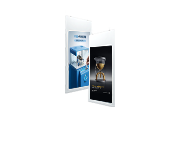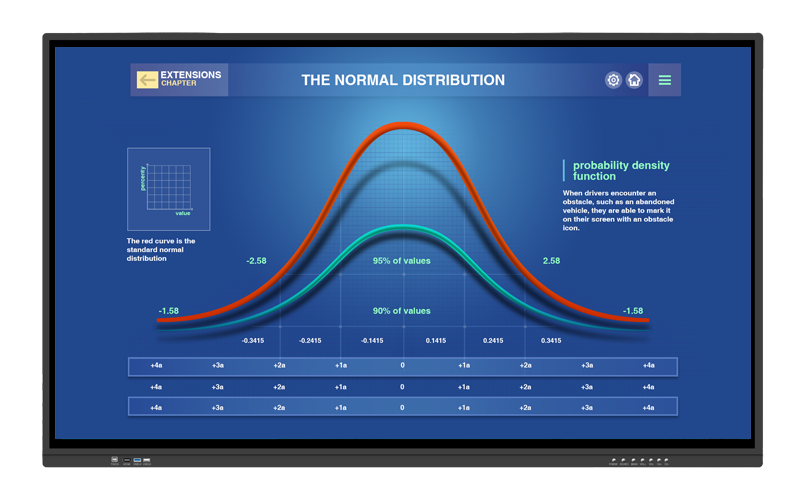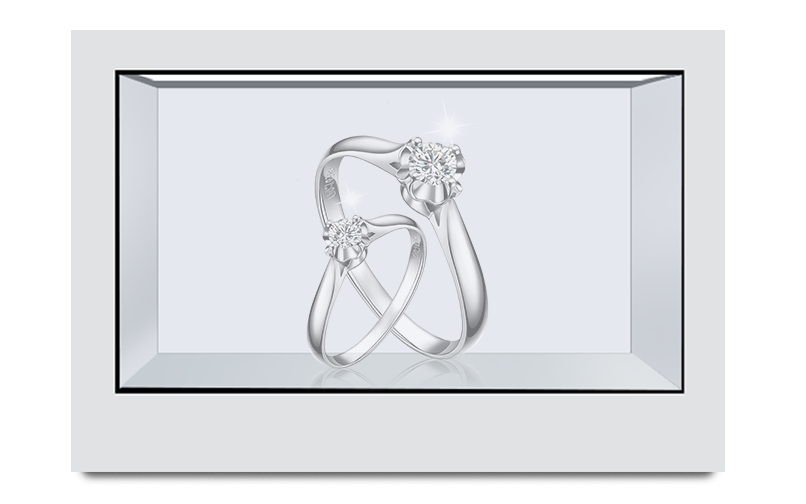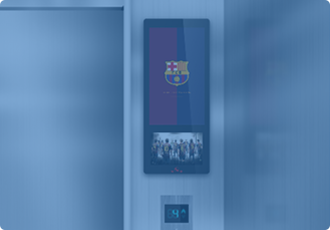Knowledge of display
First of all, we list some key indicators to pay attention to when purchasing the screen, focusing on the following:
Size, resolution, screen scale
Panel type, display technology
Gamut, color depth, color accuracy
Refresh rate, synchronization technology, response time
Because of the length, let's talk about 1 and 2 today and 3 tomorrow
In addition, of course, there are some parameters unrelated to panel quality, such as fog / mirror screen, number of interfaces, and adjustable space. These have been written clearly on the face of the book. Needless to say, you can understand. If you choose according to your own needs, I will not introduce them in detail.
Size, resolution and screen scale
First of all, the screen size and resolution. At present, the mainstream display size in the market varies from 19 inches to 43 inches. The screen proportion can be divided into widescreen (16:9), golden screen (16:10, 3:2), traditional screen (4:3, 5:4), fish screen (21:9), etc., of which the most mainstream is naturally 16:9 widescreen.
Our most common resolutions are 1920x1080 (1080pfhd), 2560x1440 (2k QHD) and 3840x2160 (4K UHD). This kind of wide screen is more suitable for viewing, but the most important thing is the low cost. Because of the same size, the 16:9 wide screen has smaller area than the 4:3 traditional screen, and requires fewer backlight modules to achieve the same brightness. For the display manufacturers, the It's said that it can save a lot of money, so the mainstream screen proportion gradually evolved from 8 years ago to 16:9.
At present, most of the displays available on the market are 16:9, and a large part of them are 1920x1080 resolution. To some extent, 1080p (FHD Full HD) has become the industry standard and the most popular resolution in the world. I also think that if the resolution of the display purchased in 2017 has not reached 1080p, it is unnecessary to watch it...
Since Apple introduced the concept of retina screens seven years ago, 2k and 4K high-resolution devices have slowly become popular. Compared with the 1080p screen, the high-resolution screen is more detailed and detailed:
After seeing the shock effect of 2k and 4K screens, I'm afraid it's hard to bear the visual sense of 1080p big fruit. The price of not too high split screen is often much more expensive than 1080p. If the budget is very limited, don't consider it.
If your screen size is large, the 1080p screen will bring serious graininess. I recommend screen sizes of 24 "and below, with 1080p resolution. It is better to choose a resolution of 2560x1440 (2k) or higher for a screen of 25 inches or more. If the budget is sufficient for a screen larger than 27 inches, 3840x2160 (4K) resolution can be considered.
In addition to the most common 16:9, there are also 16:10, 3:2 golden ratio screens. For example, 1920x1200, 2160x1440, 2560x1600, etc. The reason why I call it golden ratio is that the values of 16:10 and 3:2 are similar to 1:0.618, which enables users to get a more comfortable visual experience when watching the display. In addition, the same size display area of 16:10 and 3:2 is larger than that of wide screen, which is suitable for white-collar workers, designers and other practical users. It can be said that the golden ratio is the most suitable screen ratio for office.
However, the production cost of this kind of screen is higher than 16:9, so it is not common in the consumer display, and it is more used by MacBook, surface and other office computers. Due to the large volume of these machines, the production cost of the screen is lower than that of the display.
In addition, there is a kind of screen on the market, called fish screen, which adopts the super wide screen ratio of 21:9:
This kind of screen is more useful for some friends with special needs. For example, the editor and the tuner need to edit a long audio and video timeline, or the copywriter needs to display two pages of word manuscript on the same screen. In these cases, the efficiency of using the screen with fish will be higher. In addition to the fish screen for some game players, the vision will be wider, and watching a wide screen movie will not appear black edge.
However, the display area of the screen with fish is much smaller than that of the traditional screen with the same size, and takes up a lot of space, which requires your own choice.
2. Panel type and display technology
Panel type
Display panel types include IPS, TN and va. which one should be selected?
TN
TN panel has a fast response speed, but the color performance is often poor, and the viewing angle is small. If the screen is viewed at a slightly slanted angle, the color will turn white.
However, TN panel has low cost and low price. In addition, TN panel is widely used in the electric competitive display because of its short response time and low refresh rate. But... If you're looking for a low-cost traditional monitor, avoid the TN panel.
IPS
IPS panel has high visual angle and better color performance. In addition, IPS is a hard screen, which is not easy to leave traces after pressing, so it is widely used in touch screen. However, the price is generally more expensive than TN, and the response time is not as good as the latter.
For general users, IPS is the most recommended panel type. The screen quality is generally better than other panels, and there is no serious side effect.
However, it should be noted that some brands' IPS screens may be accompanied by light leakage (such as Dell). After purchase, please check it in time:
In addition, Samsung has a kind of panel called pls, which is actually Samsung's own IPS. There is no difference.
VA
The visual angle of VA panel is also relatively high, and the color restoration is generally good. Thanks to the high static contrast, the static picture is not even weaker than the same level IPS, but the biggest problem is that the response time is long, the drag is serious, and the VA screen with poor quality even has the feeling of dynamic blur.
In addition, the VA panel is not a hard screen, and pressing the screen will produce a mark:
VA screen is a special choice. If you are going to buy a entry-level display, and you don't care about the problem of delay dragging, only want to get better picture quality, then VA is a good choice besides IPS. In addition, the high refresh rate of VA panel E-sports screen is much cheaper than IPS E-sports screen, and it does not need to bear the TN white slag image quality, which can be considered for ordinary E-sports players who are not so keen. But we must pay attention to the performance of response time. If the response time is too long, the drag of VA will be very serious, which is bound to affect the performance of electric competition.
So in general, I highly recommend IPS panel for general users, and friends with the demand for E-sports screen will tangle in TN and va. of course, if you can afford the e-sports screen of IPS, it's roaring!
display technique
In the display technology, since the CRT display was eliminated, the mainstream display market has been the world of LCD. LCD is divided into CCFL and LED backlight forms, which sounds a bit complicated, so let's talk about one thing:
LCD panel itself is not luminous, LCD technology must be through backlight to provide light source. Because of the existence of backlight, LCD has no real black, all of which are presented in dark gray, but the gray level of different positions on the panel will be different, which is the culprit of light leakage:
But last year, a display technology called OLED began to mature:
Unlike LCD, OLED is self luminous and has no backlight. Therefore, OLED black is real black, and there is no problem of light leakage. In addition, OLED is more energy-efficient than LCD because it does not need backlight.
However, OLED is only emerging on TV, mobile phones and laptops. The consumer OLED products of monitors may not be available in large quantities until next year, so we will not start any more.
After saying these things
About to talk about the very important color!
3. Color gamut, color depth and color accuracy
We often hear about gamut in some evaluation. What is 72% NTSC, 100% sRGB and so on? What exactly does gamut mean? What is the relationship between NTSC and sRGB? What do you mean by color depth and color accuracy?
To answer this question, we first need to talk about the color management standards. Don't worry, it's not difficult to understand.
A long time ago, there was no color management standard in the world.
The painter is going to buy paint. He may say to the salesman, "I want a bucket of dark red paint."
At that time, the salesman will wonder:
"What kind of red are you talking about?
Is it Tian'anmen's red?
Or the red of mahogany?
Or the red of blood? "
"You can follow Tiananmen Gate..." Said the painter.
"The light in the south of Tian'anmen Gate is bigger than that in the north. The color in the South will definitely fade, and the color in the north will be darker. How can I know which point of the red on Tian'anmen Gate you mean by" Tian'anmen red "?
There is no standard to define "red". People can only compare the color around them, so the color is not accurate.
The same problem also occurs in printing equipment. If different printers have different definitions of color, the "red" you print will deviate from the "red" I print.
Therefore, in 1931, the color scientists of CIE tried to deduce the theoretical three primary colors from the real primary colors by mathematical method on the basis of RGB model, to create a new color system, so that the pigment, dye and printing industries can clearly define the color of products.
The image above is one of the outcomes of that meeting: CIE1931 chromaticity diagram, which draws all kinds of colors visible to the human eye in a coordinate system to form the color space shown in the image above, so we can use a set of data to accurately refer to a specific color. Or in other words: color coding.
And sRGB, NTSC, Adobe RGB and so on, which we are familiar with, are defined as "small-scale color space" in the above large-scale color space.
Among them, sRGB is the color space created by HP and Microsoft in 1996, and it is also the color space supported by Windows system and many native software by default. The software and hardware of apple before 2016 are also based on sRGB as the standard, starting from iPhone 7 and macbookpro 2016 to support a broader range of dci-p3 color space.
Adobe RGB is the color space introduced by Adobe, a professional software manufacturer, in 1998. The original intention is to include sRGB (the color space commonly used in computers) and CMYK (the color space commonly used in printing). In this way, the digital photos taken can not only be displayed and edited normally on computers, but also can be printed with the correct color without damage. Adobe RGB covers a wider range of colors than sRGB, and is favored by designers, so it is widely used in professional photography and later fields.
NTSC gamut is the color space of NTSC TV standard. NTSC is the National Television Standards Committee of the United States. The NTSC television standard they launched is a set of radio and television transmission protocol, which is used in the radio and television systems of the United States, Japan and other countries. Of course, this also means that NTSC color space is more used in the television industry.
The following figure shows the three common color spaces, and the approximate range of CMYK (××× frame, representing the color space of printing industry) in CIE1931 chromaticity diagram:
It can be seen that different color spaces cover different areas, sRGB covers a relatively small area, NTSC and adobe RGB cover a larger area.
For example, a dark green (as shown in the white dot position in the figure below) can be accurately expressed if Adobe RGB or NTSC space is used, but if sRGB space does not cover this point, it cannot be accurately described.
If I make a picture under Adobe RGB, including this dark green point, I can only find a similar point within the scope of sRGB to replace it in sRGB space, so that some high-quality images will look distorted.
In addition, in some cases, the system will not help you transfer the adobe RGB output image to sRGB space, but may display it directly according to the wrong mapping. For example, use Photoshop to output an adobe RGB standard picture, and then use the photo viewer provided by windows or Android to open the image. Because the photo application provided by these systems only supports sRGB standard, the color displayed will deviate and look a little strange. For example, orange will be displayed as ×××, purple will be blue and so on.
Gamut
After the color space, we can talk about color gamut. Gamut means the range of colors your device can display as a percentage of a certain color space. For example, the color gamut of a display is 90% sRGB, which means that the color range that this display can display accounts for 90% of the area in the sRGB space range. In the same color space, the higher the color gamut, the wider the color range can be displayed.
It sounds easy to understand... But the question is, how to convert sRGB and NTSC?
Please note: NTSC does not completely cover sRGB! You see in the above figure, some purple parts of sRGB are not covered by NTSC. So strictly speaking, sRGB cannot be converted to NTSC, and vice versa.
However, the coverage area of 100% sRGB is close to 72% NTSC, which is why some evaluation agencies and manufacturers will take 72% NTSC as a standard, because the screen close to 100% sRGB can better meet the normal use of windows system.
So how many gamut screens are good screens?
Screen with color gamut above 100% sRGB / 72% NTSC is a good one
Screens above 90% Adobe RGB / 90% NTSC are excellent ones
If the color gamut of a screen is only 65% sRGB or 45% NTSC, then the screen is a very garbage screen.
Deep color
When we talk about gamut, we need to talk about color depth and color accuracy. We usually say that a screen is 6 bit, 8 bit or 10 bit, which refers to color depth. The meaning of color depth is simply how many colors your screen can display. Different from gamut, gamut represents the richness of color, and the color depth can be understood as follows: in the same gamut range, the higher the color depth, the more delicate the display effect.
In the computer, each color is composed of R, G and B primary colors. The three colors red, green and blue correspond to a channel, and each channel has different light and shade levels, and the number of this light and shade level is called gray scale:
The three different color channels of the gray scale combine to form the various colors we see on the display.
The "color depth" is determined by the series of gray scale, and the above picture has made a corresponding relationship between the two. For example, for a 6-bit screen, its gray scale is the 6th power of 2, that is, the 64 level gray scale. Think about it carefully. There are only 64 transitions between the 6-bit screen from pure black to pure white. Isn't it too little? Therefore, the color displayed on the 6-bit display is not delicate enough, and color faults often appear.
At present, most of the displays on the market are 8 bit or "6-shake-8". There are also some high-end displays and TVs that support 10 bit color depth.
The so-called "6-8" is to forcibly enrich the gray-scale series by means of software interpolation. The display effect is a little better than the 6 bit screen without jitter, but it is far from the original 8 bit screen. This jitter technology, officially known as FRC technology, is described in the details of some display purchase pages:
If you want to buy a monitor, it is recommended to choose a native 8-bit screen. For some professional designers, the 10 bit screen is better. However, the native 10 bit screens on the market, such as Dell up2516d and up3214q, are more expensive. If you don't have enough budget, you can choose an 8-shake 10 screen.
Quasi standard
The color gamut and color depth in front mean what kind of color your monitor can display. As the name suggests, the color standard means that the color displayed is not accurate, or how much is the difference between your monitor's color and "standard" or "correct" color. The color standard is usually expressed by the value of △ E.
The above figure is the color standard diagram of a display measured by the color correction software. It can be seen that each color has different degrees of deviation from the standard color, and this deviation value is reflected as △ e (the display △ E in the above figure is 0.82).
The higher the △ e of the display, the greater the color deviation, the lower the △ e, and the more accurate the color. But △ e can never be zero, because no monitor's color is completely accurate.
Some displays will go through factory color calibration when they leave the factory, reducing the value of △ e, resulting in better color accuracy. Generally, if △ e is less than 3, the color accuracy is better. If your display △ e is too high, you can also use the color calibrator to complete the color calibration and improve the color accuracy.
In addition to △ e, color temperature and gamma will also have an impact on color accuracy. However, in order to prevent deviation in the report, most of the monitor evaluation will not mention these two parameters, so it's probably difficult for you to search and compare.
The gamma and color temperature of the above group are worse than that of the following group
The excellent embodiment of color temperature is: after changing the brightness, the color temperature will not change. The closer the measured gamma curve is to the standard curve of gamma 2.2, the better. The display with poor gamma performance can also be further optimized by color correction.
So that's all I have to say about the color of the monitor. Keep in mind that the color performance of a display is far more important than many people think, and even more important than "resolution" in many applications.
As a personal use, the display with poor color will cause deviation to your color cognition (in hifi, it's called listening and speaking view), and even serious damage to your eyes. As a commercial product, the color deviation of your design and production will cause economic loss (of course, there is nothing to do with simple codeword
4. Refresh rate, synchronization technology and response time
We talked about several important parameters of the display, such as resolution, color gamut, panel type, etc., but for the electric competition display, there are still some parameters that are more important. Today, let's talk about how to choose and buy E-sports monitors.
-Refresh rate-
For the e-sports screen, the most fundamental parameter is the "refresh rate". The so-called refresh rate is the number of screen refreshes per second on the display. The traditional display is usually 60Hz, which means it can display 60 frames per second.
As we all know, the stronger the performance of the video card, the higher the frame number of the game, and the smoother it will run. But what many friends don't know is that the ordinary display can only display 60 frames per second, which means that even if the number of frames in your video card is higher, only 60 frames will be displayed. In this case, the only advantage of higher frame number is that it slightly reduces the operation delay, and the fluency will not be improved.
For the electric competition screen, the refresh rate is often above 144hz, which means that the number of pictures that can be displayed to you per second is more than double. In this way, you can give full play to the strength of the video card and get a smooth and smooth game experience. At the same time, the operation delay has also been reduced. Think about it carefully. When using a 60Hz display, you can move the mouse once. Without any other delay, the display can refresh as soon as 1 / 60s, or 16.7ms. When using a 144hz display, the picture can refresh as soon as 1 / 144s, or 6.9ms. The operation delay caused by the refresh rate has been reduced by more than half. High demand shooting game feel on the promotion is significant.
Some of the fiercer E-sports screens can even reach 165hz or 240Hz. However, for ordinary players, the sensory difference brought by more than 144hz is limited, which may be more useful for professional E-sports players.
In addition, it should be noted that if the refresh rate of a screen is not a multiple of 24, it may be realized by overclocking. For example, many 165hz E-sports screens are overcharged from 144hz. Of course, as long as the stability can be maintained, the over frequency out of the electric competition screen is also optional.
Of course, when it comes to display overclocking, someone will ask if my ordinary screen can be transformed into an electronic competitive screen through overclocking. Of course, the answer is No. otherwise, what else do businesses sell? The highest refresh rate of ordinary display is only 75 Hz, and most display can't improve the refresh rate much under the original resolution. So don't think about being cheap...
-Response time-
In the first article, we have talked with you about the selection of the e-Competition panel. Let's talk about the response time today.
When we talk about the response time of the electric competition screen, we generally refer to the gray-scale response time. In the color gamut article, we have introduced the meaning of gray scale, and the gray scale response time refers to the time required for the screen to transition from one gray scale to the next. The shorter the response time is, the faster the screen refreshes, and the lower the screen delay, the less likely it is to produce a smear.
In this respect, the best one is the TN panel's e-Competition screen. Although the image quality is generally poor, the response time of TN e-Competition screen can often be 1ms, and there is almost no drag. However, the response time of some VA and IPS panels may be relatively long, often around 4-5ms. Therefore, some VA screens may produce more obvious drag shadow, which may affect the competitive feel (do not follow hands). But keep in mind that even the most serious drag screen, the delay is always lower than that of a normal 60Hz display.
So if you don't care about the quality of dross picture, you want to get the best touch in shooting games like csgo, maybe TN video game screen will be more suitable for you. But if you're playing games like lol and dota2 that don't require much fluency, or you don't want to suffer from the quality of dross pictures in exchange for a little bit of hand feel improvement, it's also good to choose VA screen (or if you have money, you can buy IPS video game screen).
-Synchronization technology-
If you always pay attention to our article, you should remember that we sent it before, so we don't talk about it here much. Friends who don't know can move to this article.
The display supporting synchronous technology can adjust the refresh rate dynamically to keep consistent with the frame rate output by the video card, so that there will be no picture tear, and players can focus on the smooth competition.
Among them, g-sync is NVIDIA's exclusive synchronization technology, which has a very good effect, but players have to pay an expensive fee for additional chips and licensing fees, and the display supporting g-sync must be equipped with n card to play its role.
Free sync is a special synchronization technology for AMD. Its effect is worse than that of g-sync, but the monitor does not need extra hardware and does not need to pay a license fee. Currently, free sync is only available to users of a card.

























































